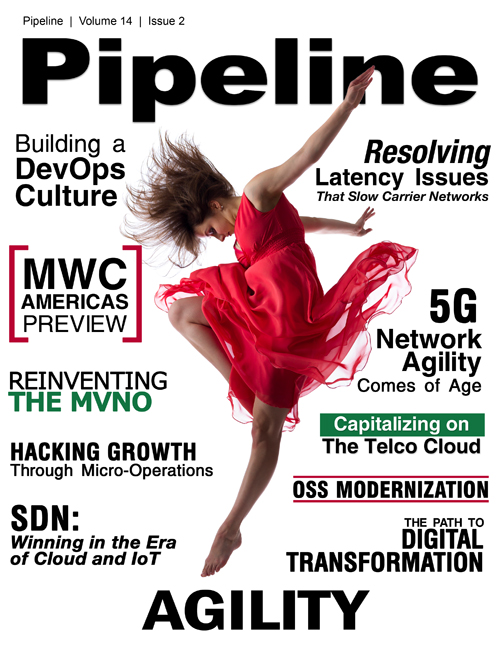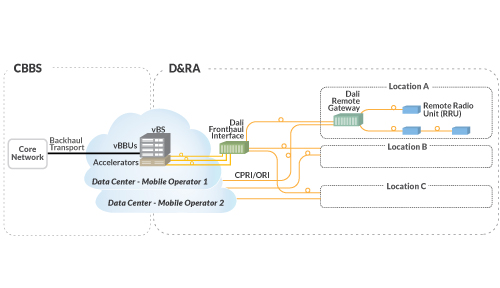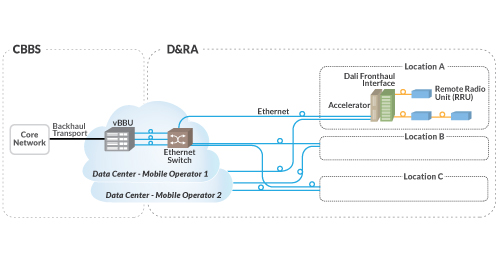5G: Network Agility Comes of Age
The ability to manage virtual base station functions centrally through software makes network resource management quicker, easier, and more flexible. It also opens the door to automation. New services are created by sequencing one or more virtualized network functions and adding an application layer, producing a packaged combination of telecom and IT resources that can be provisioned as one entity and efficiently orchestrated and automated using network function virtualization.
Extending Virtualization Through the Network Fronthaul to the Radios
The greatest advantages of virtualization can only be realized once the virtualization extends end-to-end; not just the base stations of the network, but rather extending the virtualization through the fronthaul to include the network radio resources. The following diagrams present two different approaches to an end-to-end virtual radio access network or virtual RAN. In the first, an integrated accelerator in the virtual base station facilitates the CPRI/ORI transport over fiber through the fronthaul interface and remote gateway to the remote radio units. The Fronthaul Interface and Remote Gateway elements intelligently aggregate and route the digital signals to wherever they are required.
Fig. 1 - Virtualization Through the Fronthaul
Fig. 2 - Virtual RAN
As with the virtual base stations, virtual fronthaul elements can be remotely configured using software, and allocation can be dynamic and elastic. The network can also be easily scaled by adding new bands, radio resources and operators incrementally. Adopting fully digital distribution in the fronthaul also eliminates the need for point of interface (POI) units yielding lower equipment, space, and energy requirements resulting in reduced capital and operating expenditures.





















